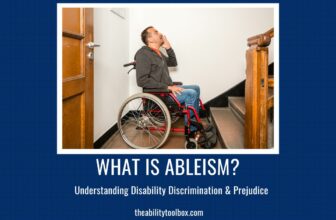If you or a loved one lives with food allergies or dietary restrictions, this guide will help you navigate holiday meals and gatherings to ensure a safe, inclusive, and joyous season for all.
The holidays are without fail a time of many emotions: joy over families united and gifts to share, frustration as family members express conflicting political opinions, and sadness for anyone missing the celebration. These emotions are only amplified when navigating the holidays with complex medical needs, particularly with dietary restrictions and food allergies.
When I was diagnosed with celiac disease during my sophomore year of high school, I was not prepared for this reality. The day of my endoscopy which diagnosed my celiac, my doctor explained the basics of my condition. No cheerios because they are manufactured on shared lines with gluten, but Chipotle would be OK as long as the employees changed their gloves. My mom and I looked at each other, taking mental notes, both seemingly in agreement: We could do this.
However, as the Thanksgiving holiday rolled around no more than three weeks later, our collective confidence wavered. Could I eat turkey if the stuffing was not gluten-free? Nope, turkey was out. Would our non-gluten-free pots and pans make me sick? Yep, off to Target’s cooking aisle we went. We rarely cooked Thanksgiving at our home anymore since my grandparents moved away; it was too much of a hassle for four people, or rather three when excluding my very picky brother. So, we opted for a restaurant instead, selecting one which would have gluten-free options for me, Thanksgiving food for my parents, and kids meals for my brother. Everyone would be happy, right? Not.
The disappointment quickly set in as I realized how difficult it is to sit around, watching everyone around you eat foods you like, while you eat a bland, alternative option. It sucks. It’s also the holidays. However, since that first Thanksgiving, as well as the subsequent Christmases and Easters, I took matters into my own hands, devising a plan to ensure I never felt left out again. Here’s what I learned.
4 Holiday Gathering Tips for People with Food Allergies
1. DON’T: I repeat do NOT, let it “figure itself out.” You will be miserable at your holiday gathering.
I have done this a million times. There are frankly two possible outcomes, one arguably worse than the other, but both equally as difficult. One possibility is that you eat a full, allergy-friendly alternative meal. Sounds great in theory, but 99.999% of the time, this meal will not be a 1:1 equivalent to what everyone else is eating. I’ve had chicken parmesan at Thanksgiving, pasta at Christmas Day’s ham dinner, and everything in between. While these foods are great on any other day, they won’t fill that desire for “standard options.”
The other option, which is often far worse, is you eat whatever is already there and seems to be allergen-free. Worst case scenario, the food has been cross-contaminated, meaning another guest used the same tongs to serve themself the safe food on a plate with non-safe foods. Epic failure. The less bad, yet equally awful scenario is that you scrape together a plate of appetizers, finger food, and desserts. Meaning, you’re hungry, really hungry. If I eat another plate full of fruit, salad, and ice cream, I may throw a plate like they do in bad Italian wedding movies. You will be hungry, angry, and sad; you will be all the emotions in Inside Out — minus the joy.
But don’t worry, there’s a solution!
2. DO: Bring an allergy-safe alternative food option that is a direct equivalent to the holiday meal that is being served to others.
I tried this for Thanksgiving this year. It is life-changing. I knew the standard Thanksgiving courses would be served – turkey, stuffing, potatoes, and vegetables. I also knew Whole Foods was open on Thanksgiving Day, and I had just enough room in my suitcase for a pasta pot. So, I rolled up to Whole Foods that morning, and bought a fresh rotisserie chicken (my turkey equivalent), potatoes to make fresh mashed potatoes, and a gluten-free frozen pie. I even brought with me Trader Joe’s gluten-free stuffing. One hour later, I had managed to prepare fresh potatoes and stuffing to eat alongside my chicken; I had a real Thanksgiving meal. Looking around the table and seeing everyone else’s plates stacked high with foods that looked just like mine, I smiled.
All I needed to do was ask and inform. I let our host know ahead of time about my plan, reassured her that I would be happy with this alternative, and asked what she would be serving. This enabled me to determine the exact equivalents and ensure my typically-sad plate looked the same as everyone else’s!
3. DON’T: Just assume you can use Grubhub/Uber Eats/insert delivery service for every meal.
You will end up equally miserable. Sure, you will eat. However, the dietary repercussions of this option are immense. Cross-contamination is possible, which leads to some background anxiety that does not let up until the window of sickness – for me, 30 minutes from my first bite – has passed. Furthermore, just because food is safe, does not mean it tastes good or is good for you. Sure, for a meal or two this can be a treat. When I visit family, I am excited to have the restaurants we don’t have in New York City delivered. After a few meals, though, the novelty often wears off as options create an unbalanced diet, typically void of fruits or vegetables. This makes my energy and mood worsen, and I become cranky, even if I’m eating safely. Download the apps, load your cards, and identify options, but unless fast food agrees with you many days in a row, I would plan to stagger these delivery services with cooking, especially on holidays when many restaurants may be closed.
4. DO: Make a list ahead of time of restaurants in the area you can eat at, and bring easy prep-free or low-prep allergy-safe foods.
The simple act of planning ahead always goes a long way with food allergies. It can be exhausting to always have the responsibility of finding safe restaurants placed on me, the person with the allergy, so to friends and family members of people with allergies, helping with this also goes a long way! For some allergy groups, like celiac, apps including Find Me Gluten Free can be helpful, though far from perfect; they do not have reviews of every restaurant and often exclude chains. Additionally, identifying low-prep or prep-free items can be extremely helpful. If it meets your dietary restrictions, bringing rotisserie chicken in a container and some mix-ins can be really helpful to avoid delivery waits or simply escape the greasy options on apps.
As I mentioned above, bearing the entire responsibility as the person with allergies can be exhausting. Giving yourself breaks during the gathering, or even arranging to leave a few days early to have access to your safe kitchen sooner sometimes can be really helpful to mental health. Additionally, there are many steps friends and family can take to support people with food allergies and dietary restrictions.
4 Tips for Family and Friends of People with Food Allergies
1. DON'T: Do NOT ask why we cannot “cheat” on our food allergies.
Even if an allergy does not result in anaphylaxis, as celiac standardly does not, that does not mean consuming the food does not cause irreparable bodily damage. One bite of unsafe food can lead to symptoms lasting months and lifelong damage. If we say we cannot eat something, believe us.
2. DON'T: Do NOT label us “picky” or “sensitive” for having food allergies or dietary restrictions.
Having allergies requires hypervigilance, and the reality is sometimes even if we can eat something, we may not like it for non-allergy reasons. Respect when we choose not to eat something. Sometimes we are so tired of explaining why shared ovens are not safe that we simply don’t want to explain cross-contamination in agonizing detail. We are not being picky; we are being safe.
3. DON'T: Do NOT be offended if we cannot eat something you made, even if you thought it was safe for our food allergies.
One of the sweetest gestures is when someone I know tries to cook for me with my allergies. The reality, though, is if you’re new to that food allergy, you may make some mistakes along the way. That’s OK, but don’t be offended if we explain we cannot have the food. I personally at least am always happy to explain why, share alternatives for the future, or even help remake the food safely if that’s an option. This does not detract from your gesture and our appreciation; we just need to be safe.
4. DO: Offer to help with purchasing food and identifying restaurant options.
Taking some of the pressure off the person with allergies means everything. Offer to Google local restaurants to order from, drive us to the grocery store, or better yet, ask us for our favorite allergy-friendly foods, and pick them up before our arrival. Taking some of the stress off us makes the holidays not only tolerable, but enjoyable for us all.
The holidays are always a complicated time. Political debates, sibling rivalries, and board game blow-ups are bound to happen, and with tempers already boiling over, food allergies can sometimes unfortunately send gatherings over the edge. While this guide is far from exhaustive, hopefully, it provides helpful tips to all parties involved, keeping those holiday tempers at bay and people with food allergies safe.
How have you managed the holidays with food allergies or dietary restrictions?
Let our community know in the comments.
Image by Terri Cnudde from Pixabay








